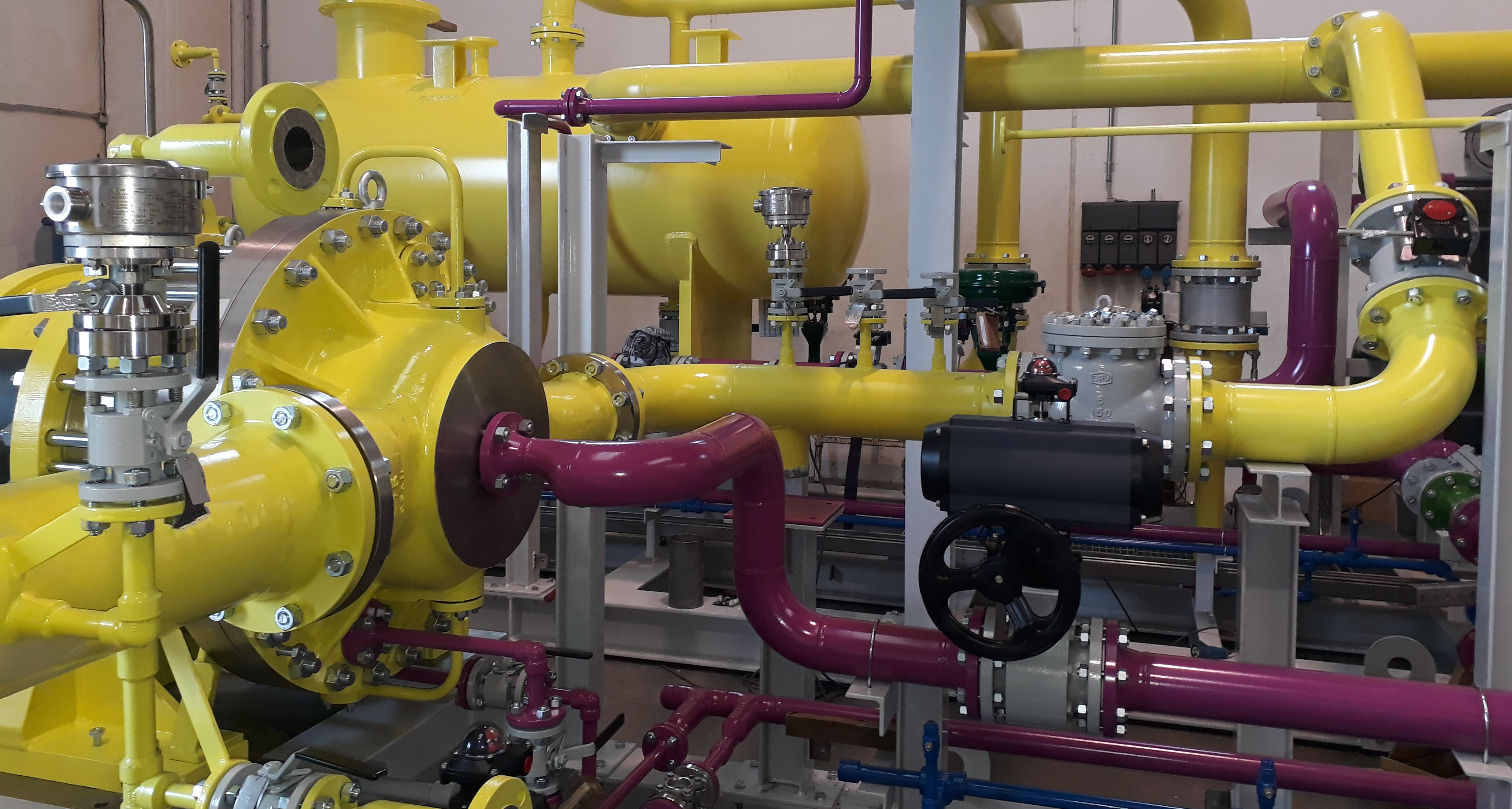Dry Chlorine
The chlorine gas is produced by a process of electrolysis. After the cooling and drying stages, the gas enters the liquid ring compressor to begin the ‘chlorine compression and liquefaction process’.
At this process stage, it is essential to maintain a specific temperature of the gas at the compressor inlet to prevent corrosion and safety issues. The isothermal feature of Garo Liquid Ring Compressors allows the gas to maintain the right temperature and to run the process safely. Additionally, the ability of Garo compressors to run with different seal liquids, and specifically sulfuric acid, allows the process to be handled by steel or iron equipment.
Once compressed, the chlorine gas is then liquefied through cooling. The cooling process requires strict temperature and pressure controls in order to work effectively. Once again, GARO compressors play a key role in the process, by ensuring that the required discharge pressure is achieved prior to the chlorine being passed to the after-condenser for the condensation process.
Wet Chlorine
Liquid ring systems for wet chlorine applications are similar to those used for dry chlorine, with the exception of the materials used in the system and seal liquid. Water is used as seal liquid in wet chlorine processes. As a result, a wet chlorine process requires compressors constructed from titanium, to eliminate the risk of corrosion.
Download the Case Study
Benefits of Liquid Ring Compressors
The benefits of Liquid Ring Technology applied to chlorine gas compression are many:
- Safety – The isothermal properties of the liquid ring allows Liquid Ring Compressors to operate at much lower temperatures than other technologies, lowering the risk of corrosion and damage
- Reliability – With a single moving part, Liquid Ring Compressors exhibit less opportunity for failure and are able to handle occasional carryover of particles such as salt or organic materials
- Affordability – Liquid Ring Compressors exhibit longer mean time between failure (MTBF) and a lower total cost of ownership (TCO) than competing technologies.
 Global (EN)
Global (EN)
